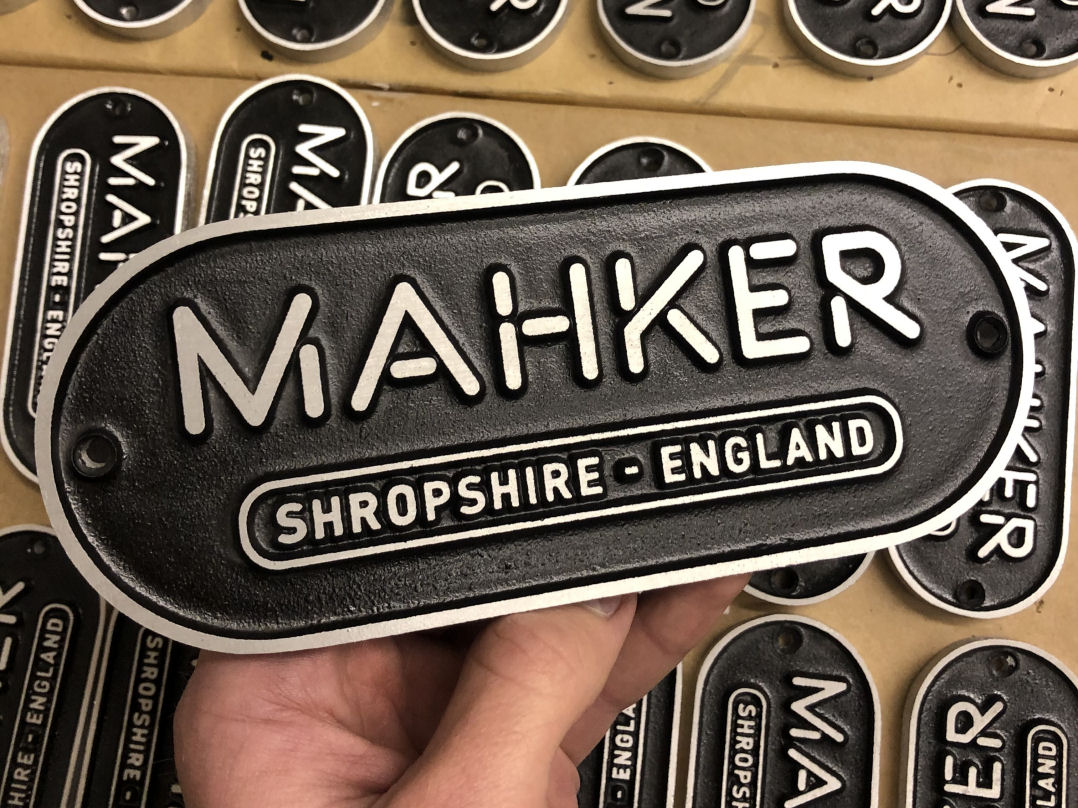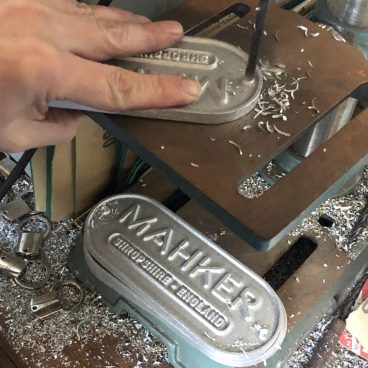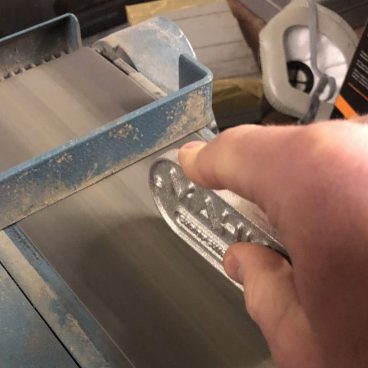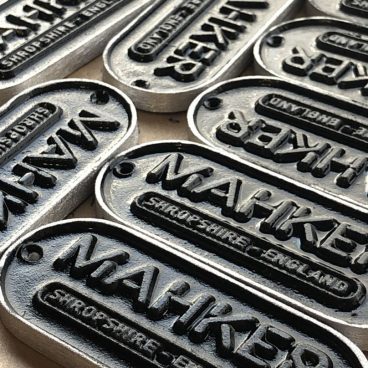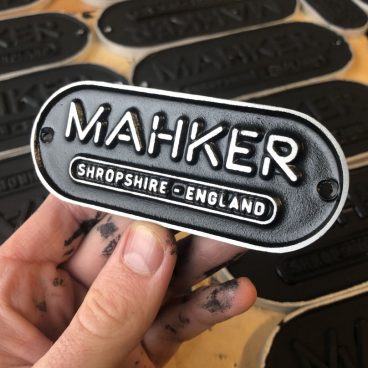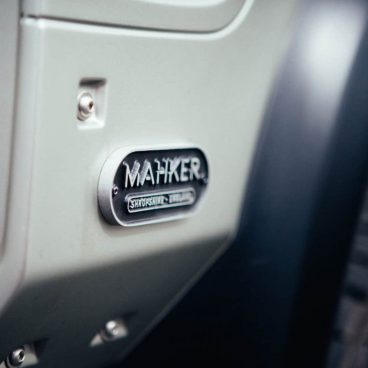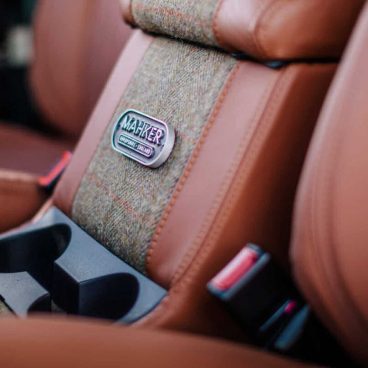MAHKER Cast Aluminium Badges
Based in the heart of Shropshire, UK, MAHKER are an internationally inspired workshop using hand crafted components to build outstanding vehicles with endless possibilities. This post is an insight into the production behind the cast aluminium badges we manufactured for their builds.
Working closely alongside our local foundry, we have been manufacturing exterior vehicles badges in cast aluminium. This allows us to manufacture items which are normally too large using our traditional stamping and lost wax techniques.
A pattern is made based on the desired design. A bottom mold is filled with compacted sand and the pattern is pressed into the sand. The top mold is then aligned and placed on to the bottom mold. More sand is added to the top mold and compacted until almost solid. The top mold is then carefully lifted and the pattern removed, leaving a vacuum in the the sand. The top mold is then re-aligned again to the bottom, and molten metal (in this case aluminium) is poured into the vacuum and allowed to cool. Once cooled, the top and bottom molds are separated to leave the aluminium casting.
Leaving the castings overnight, gave the enamel enough time to dry. We then polished the surface of each casting which also removed any enamel that had accidentally spilled over onto the raised areas. Finally we gave the plaques a clear coat of lacquer to add a layer of protection and leave a smooth and shiny surface, giving them a nice contrast to the black enamelled areas.

